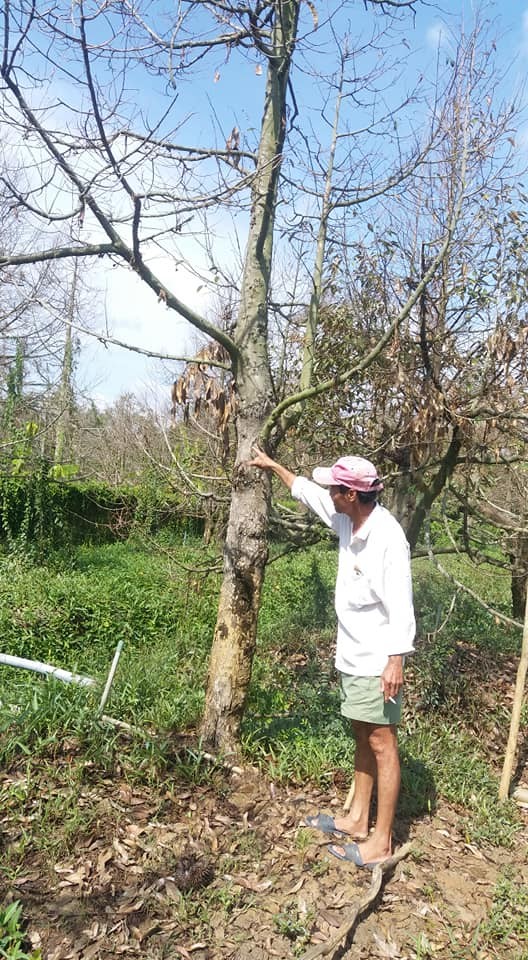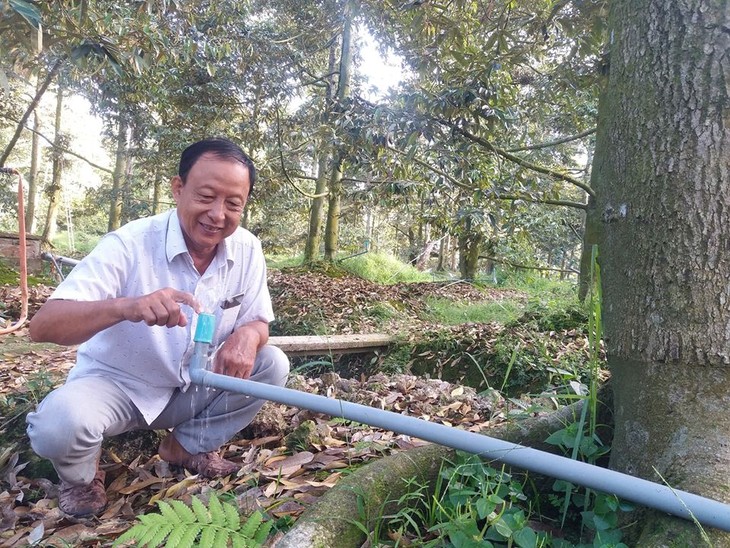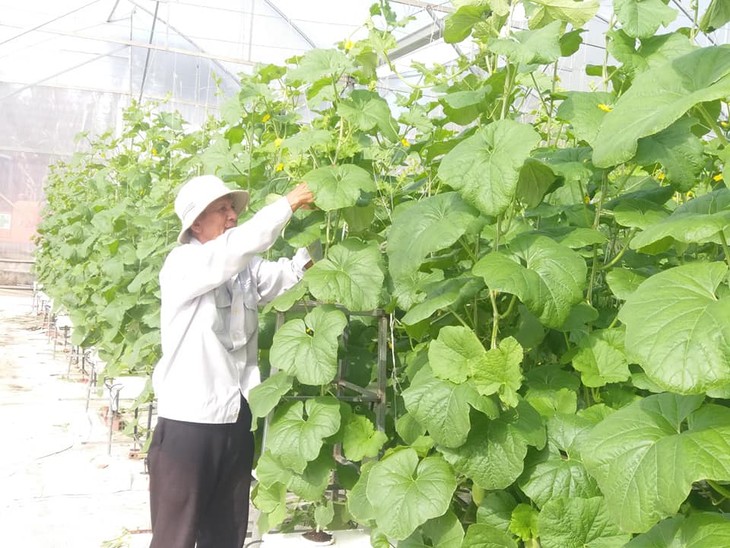(VOVWORLD) - Mekong Delta provinces have experienced the most severe drought and saline intrusion ever in the dry season of 2019-2020 but the negative impacts on agriculture production and daily life have been minimized by effective measures.
 Severe droughts devastate many orchards in the Mekong Delta. (Photo: VOV) Severe droughts devastate many orchards in the Mekong Delta. (Photo: VOV) |
Nearly 7,000 hectares of orchards and 8,000 hectares of aquaculture were affected by this year's droughts and saline intrusion, which lasted longer but caused less damage than the dry season of 2016. The winter-spring rice crop lost less than 3% of its total area.
Minister of Agriculture and Rural Development Nguyen Xuan Cuong attributed this achievement to measures implemented by localities like rotating crops, adjusting planting and harvest times, and choosing plants and animals better adapted to drought and salinity.
In addition, irrigation system has been improved to control salinity and deliver freshwater to drought areas, said Cuong.
“First, we identified problems quickly and found effective solutions as early as last year. Second, we implemented groups of solutions and quickly completed 5 inter-region irrigation projects to provide freshwater and control saline water. Third, we planted the winter-spring rice crop more than a month early. Finally, and most important, we established a political consensus among the locals,” Cuong said.
Experts say that droughts and saline intrusion are likely to recur.
Cao Van Trong, Chairman of the Ben Tre provincial People's Committee, said, “To adapt the agricultural sector to annual droughts and saline intrusion, a long-term plan has been outlined that identifies three ecological regions: freshwater, brackish water, and salt water.”
Trong added, “Under the plan, the freshwater region will concentrate on freshwater fisheries and orchards that grow the region's specialty trees like green-skin grapefruit, durian, mangosteen, and rambutan. The brackish water region will specialize in growing coconut and other fruit trees in combination with aquaculture, especially green-clawed crayfish. The salt water region will focus on sea shrimp, clams, and oysters.”
 A durian orchard in Tien Giang province applies a water saving solution. (Photo: VOV) A durian orchard in Tien Giang province applies a water saving solution. (Photo: VOV) |
Associate Professor, Dr. Le Anh Tuan, Deputy Director of the Research Institute on Climate Change at Can Tho University, said, “During the rainy season, all kinds of water containers like jars, jugs, and cement tanks should be used to store as much rain water as possible, which can then be used for daily consumption. Ground water should be used for agricultural cultivation.”
Dr. Dao Trong Tu, Director of the Center for Sustainable Development for Water Resources and Climate Change Adaptation, said good water control is the key to coping with drought in the Mekong Delta.
 A model of honeydew melon cultivation and a drip irrigation system of Nguyen Thanh Hung in Cho Gao district, Tien Giang province (Photo: VOV) A model of honeydew melon cultivation and a drip irrigation system of Nguyen Thanh Hung in Cho Gao district, Tien Giang province (Photo: VOV) |
Tu said that in the long term, regional production needs to adapt to changing weather patterns, water sources, and other natural conditions. Shifting from wet rice cultivation to other crops is one example.
“We can keep growing rice in some areas but not every area should be used for rice farming. Ben Tre, for example, only needs to devote part of its area to growing rice. The 8 coastal provinces that are prone to saline intrusion and drought should shift to seafood production and growing fruit trees and other salt-tolerant crops. This will use the available water more efficiently,” said Tu.